A trainer says these are the six best exercises to help beginners build full-body strength and muscle
All you need is a pair of dumbbells to give these moves a go

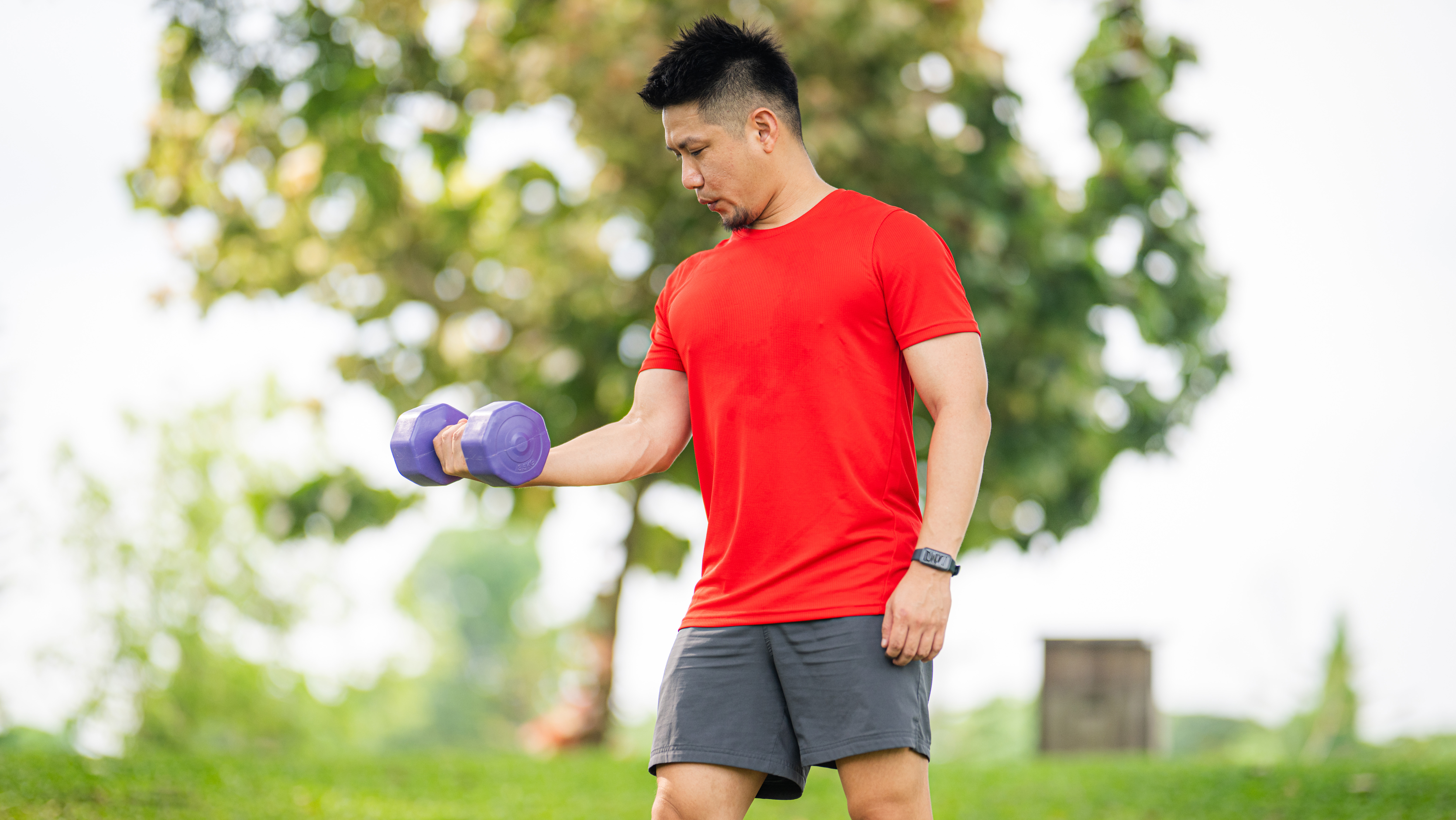
A quick scroll through fitness feeds on social media will bombard you with different exercise suggestions and advice. But which moves really deserve a place in your exercise plans?
Fitness First trainer Olly Banks is here to help you decide, sharing his six favorite beginner-friendly exercises for building full-body strength. He’s also explained the benefits of each move below and given detailed pointers on how to do them properly.
You don't need much to do the moves, just a pair of dumbbells and an exercise mat.
Six best exercises to help beginners build strength
- Squat 3x10-12
- Plank 3x30-60 seconds
- Push-up 3x8-10
- Lunge 3x10-12 on each leg
- Biceps curl 3x8-10 on each arm
- Bent-over row 3x10-12 on each side
If you want to use these exercises in a workout, try doing them one after the other, following the repetitions below. Once you've finished, repeat twice more to get a full-body blast.
1. Squat
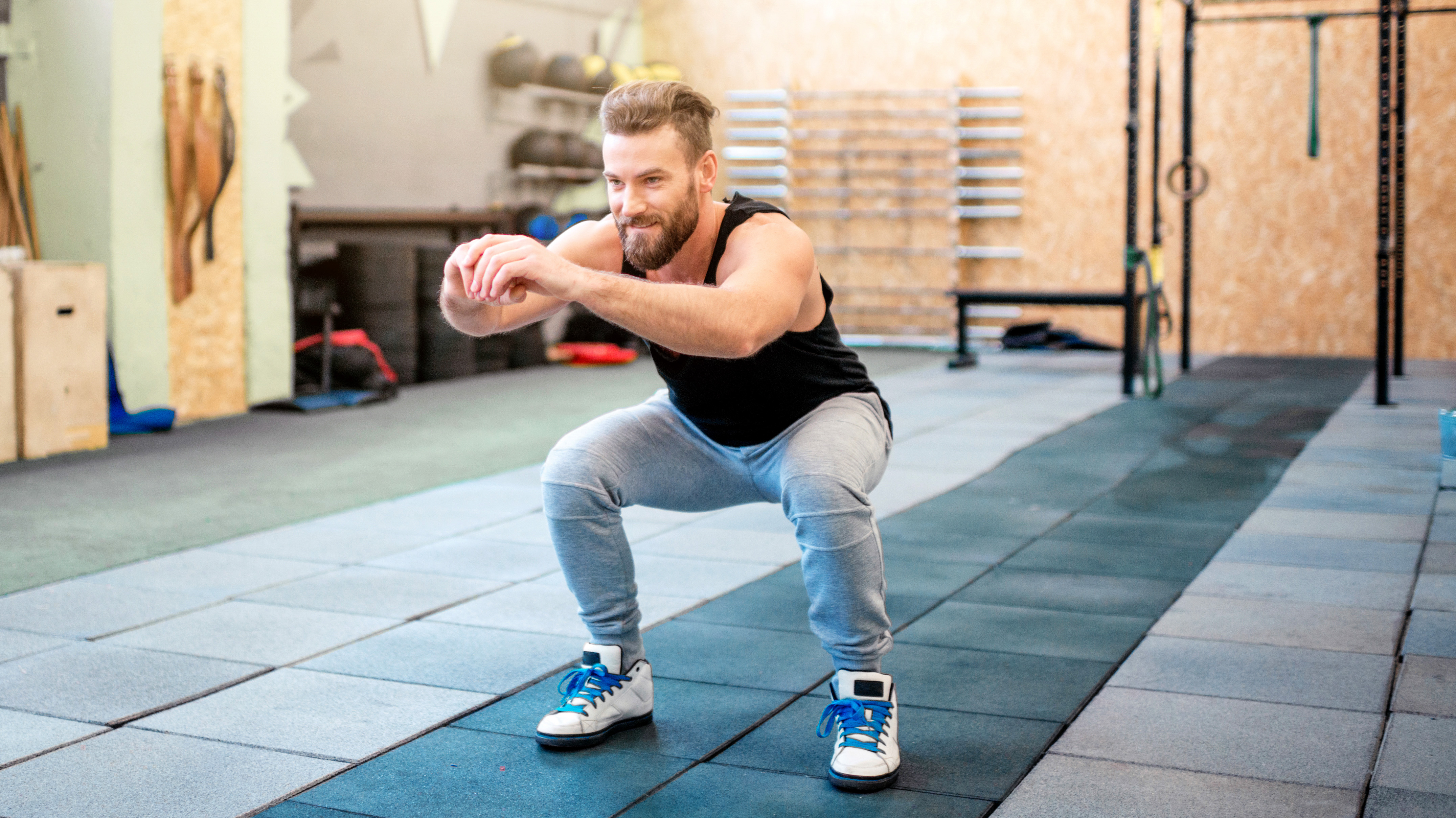
Sets 3 Reps 10-12
- Stand with your feet slightly wider than shoulder-width apart, toes pointing forward or slightly out. Extend your arms straight out for balance or hold them close to the chest.
- Slowly bend your knees and hips, sitting back as if you’re about to sit in a chair.
- Lower down until your thighs are parallel to the floor (or below) while keeping your back straight and chest up.
- Press through your heels to return to the starting position.
Benefits of this move
"Squats are a fundamental exercise that targets your lower body, primarily focusing on your quads, hamstrings, glutes and calves," says Banks. "They also engage your core and can improve your balance and coordination. Regularly performing squats can enhance your overall lower-body strength and improve mobility."
Start your week with achievable workout ideas, health tips and wellbeing advice in your inbox.
2. Plank
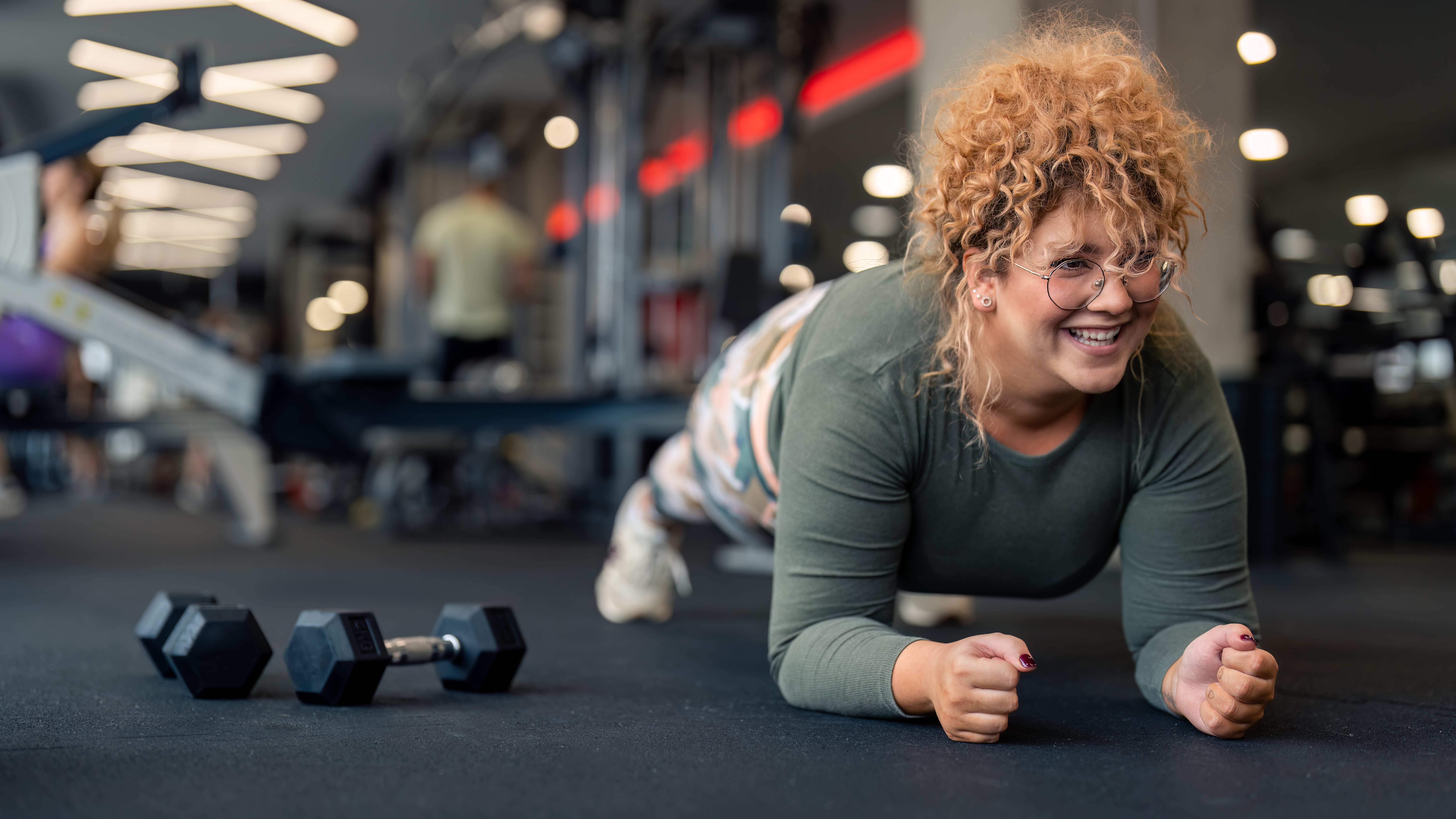
Sets 3 Reps 20-60 seconds
- Lie face down on the ground.
- Prop yourself up on your elbows, ensuring they are directly under your shoulders.
- Extend your legs behind you, resting on your elbows and toes, so your body forms a straight line from your head to your heels.
- Engage your core and hold this position—try starting with 20 seconds, then increase this as you grow stronger.
Benefits:
"Planks are an excellent exercise for core stabilization. They work not just your abdominals but also your lower back, hips and shoulders. Consistent practice can improve core strength and posture, and reduce the risk of back pain."
3. Push-up
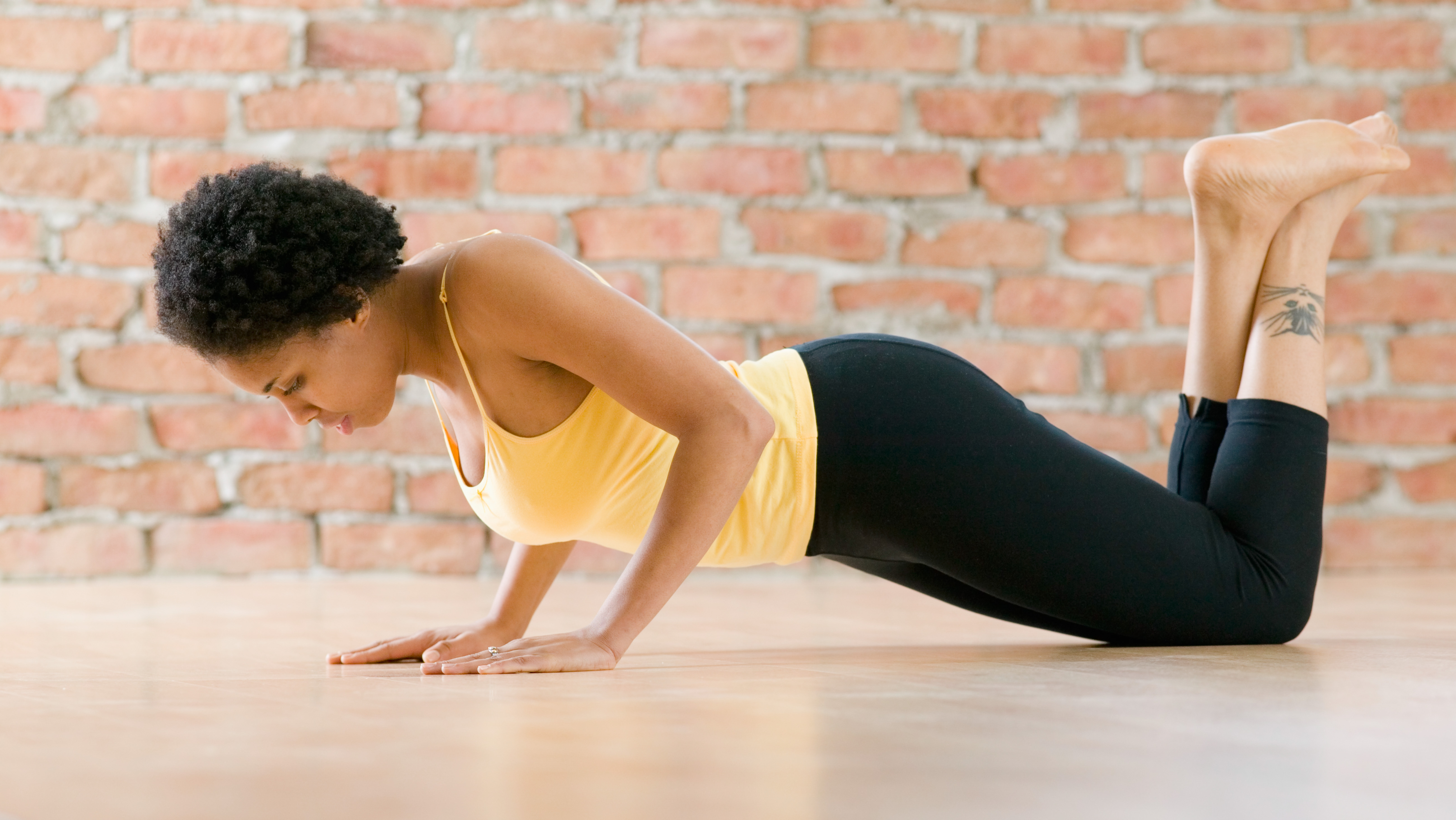
Sets 3 Reps 8-10
- Start in a high plank position, resting on your hands beneath your shoulders or slightly wider than shoulder-width apart. Spread your weight between your hands and your toes. Your body should form a straight line from your head to your heels.
- Bend your elbows to lower your body towards the floor, keeping your upper arms at a 45° angle to your torso.
- Lower your body until your chest nearly touches the floor, then push through your hands to return to the starting position. If this is too hard, try performing the move with your knees on the floor or placing your hands on an elevated surface.
Benefits:
"Push-ups work your upper body, including your chest, shoulders, triceps, and core. They help build upper-body strength and improve your posture and core stability," says Banks.
4. Lunge

Sets 3 Reps 10-12 on each leg
- Stand upright with your feet hip-width apart.
- Take a big step forward with one leg and lower your body until both knees are bent at a 90° angle. Your back knee should hover just above the ground, and your front knee should not go beyond the toes.
- Push through your front leg to return to the starting position, then repeat with the other leg.
Benefits:
"Lunges primarily target the thighs and glutes, while also engaging your hamstrings and calves. They can improve lower-body strength, balance and coordination," says Banks.
5. Dumbbell biceps curl

Sets 3 Reps 8-10 on each arm
- Stand with your feet shoulder-width apart, holding a dumbbell in each hand with your arms extended at your sides, palms forward.
- Keeping your elbows close to your torso, curl both weights up to shoulder level. Your upper arm should remain fairly still and your elbows should stay pointing at the ground throughout.
- Pause at the top, then slowly lower the dumbbells back to the starting position with control.
Benefits:
"Biceps curls focus on strengthening the biceps muscles and forearms. They are essential for upper- body strength, aiding in lifting and pulling movements."
6. Dumbbell bent-over row
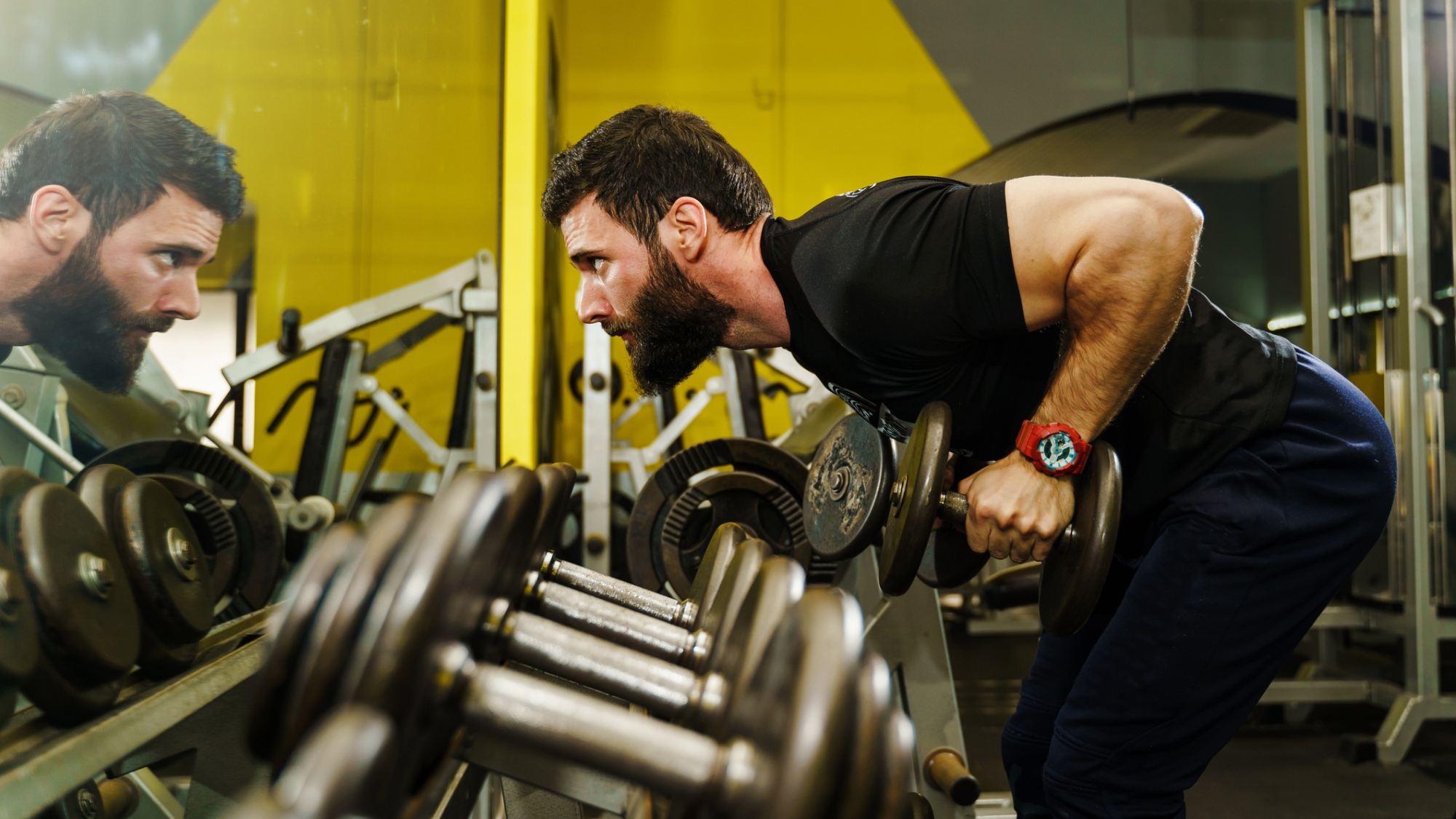
Sets 3 Reps 10-12 on each side
- Stand with your feet hip-width apart and your knees slightly bent, holding a dumbbell in each hand with your palms facing your body.
- Keeping your back flat, hinge at the hips to lean over until your torso is almost parallel to the floor. Allow your arms to hang straight towards the ground. This is your starting position.
- Retract your shoulder blades (think about moving them back and down, like you were going to put them in the back pockets of a pair of jeans).
- Drive your elbows behind you to row both dumbbells towards the bottom of your ribcage, keeping your elbows close to your body.
- Squeeze your shoulder blades together at the top, then slowly lower the weights back down to the starting position.
Benefits:
"This exercise targets your upper back muscles, including the lats, rhomboids and traps. It also works the biceps and helps improve posture by strengthening the back."

Harry Bullmore is a Fitness Writer for Fit&Well and its sister site Coach, covering accessible home workouts, strength training session, and yoga routines. He joined the team from Hearst, where he reviewed products for Men's Health, Women's Health, and Runner's World. He is passionate about the physical and mental benefits of exercise, and splits his time between weightlifting, CrossFit, and gymnastics, which he does to build strength, boost his wellbeing, and have fun.
Harry is a NCTJ-qualified journalist, and has written for Vice, Learning Disability Today, and The Argus, where he was a crime, politics, and sports reporter for several UK regional and national newspapers.